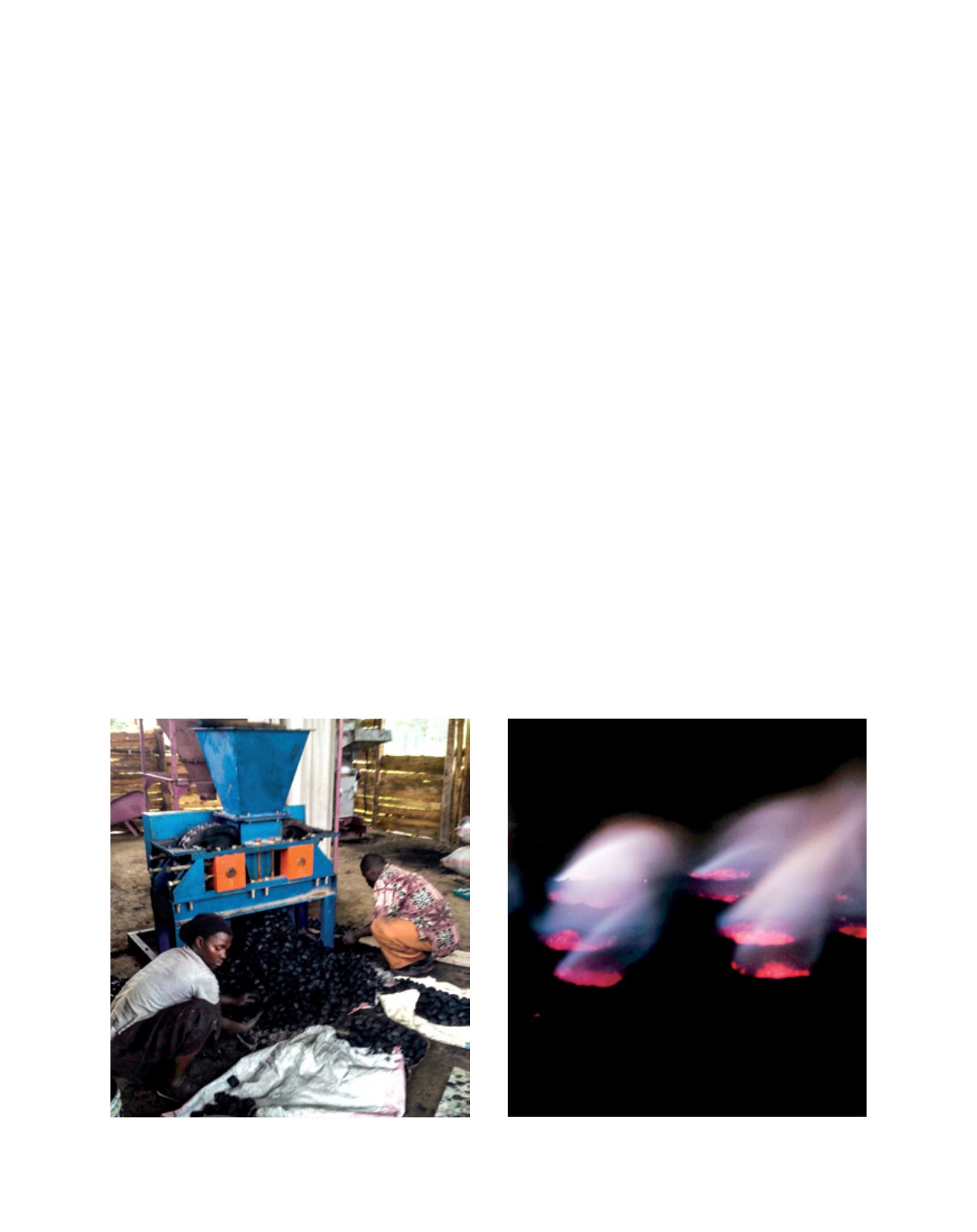

[
] 114
energy markets complement agriculture and can provide a
second, steady and sustainable income from biomass, which
can be grown by small farmers even in rain-fed areas. Given
that the amount of income derived can rival that from food
agriculture and greatly increase resilience, the traditional
concept of farming as being for food production only will
expand to one that includes biomass for energy as well. This
in turn will help to create a new market opportunity and turn
biomass agriculture into a second major farming segment.
Recognizing the importance of energy for sustainable
development, the United Nations designated 2012 as the
International Year of Sustainable Energy for All. For the poor,
the main source of energy is fuelwood, a renewable, solid
biofuel. However, given the linkage of fuelwood use to defor-
estation, policymakers have looked down upon and dissuaded
the use of fuelwood and even promoted liquid petroleum gas.
The poor have been stigmatized by this linkage to poverty, the
poorest even being characterized by such fuel usage. This is
a social, environmental and economic policy tragedy of epic
proportions; the potential of women, the main gatherers of
fuelwood, as responsible managers has been inadequately
understood, and their role as potential energy producers has
not been recognized, facilitated and incentivized. The 500
million women who cook (at least) twice daily with fuelwood
and their 2.5 billion family members could be a potent trans-
formative force in the battle against climate change. That is
nearly one-third of the world’s population!
The association of the poorest with fuelwood now needs a
change since well-off segments in developed countries have
come full-circle to biomass pellets and briquettes (urban fuel-
wood). Solid biofuel pellets/briquettes can be produced from
any biomass, not just from fuelwood that is typically obtained
from forest trees. This is the game-changer. Smallholder
farmers in rain-fed areas have 1.5-3 tons of non-fodder agri-
wastes from farming. This is commonly burnt to clear the
fields for planting. However, if pelleted or briquetted, it can
be used as fuelwood, make it sustainable.
Policy push should change to encouraging the wider use of
sustainable biomass solid biofuels by rural households while
incentivizing and making the sustainable production of these
biofuels a financially attractive economic option and advocat-
ing against non-renewable fossil liquid/gas fuels. Importantly,
of all the renewable energy options, only biomass solid biofu-
els sequester CO
2
.
The first key strategy for a robust source of income devel-
oped by the International Network for Bamboo and Rattan
(INBAR) is the innovative household charcoal (HHC) that
is produced at least twice daily, year-round, in 500 million
households when cooking using fuelwood. HHC, which is
commonly discarded, has been made into a year-round source
of income for women. It turns every cooking stove that uses
fuelwood into a processing unit and the woman into a micro-
entrepreneur. The yield is approximately 10 per cent by
weight of the fuelwood used. Efficient stoves can double this
to 20-25 per cent. At 10 per cent yield, the total calculated
HHC production from 500 million households amounts to
183 million tons – nearly four times that produced commer-
cially by deforesting landscapes (47 million tons). At 20 per
cent yield, this could be 365 million tons of HHC, which as
pure carbon equals 1,338 million tons of CO
2
.
In Rajasthan, India, the incremental income from this
HHC for the 6,500 participating households is an addi-
tional 20 per cent of annual income for a rural working
person (income at 10 per cent yield). This can go up to 40
per cent and even over 50 per cent of the annual income.
In Tanzania, given the low base income, income from just
Charcoal briquette production in Tanzania
Image: Donald Kibuti, WODGRA
Blue flames from a honeycomb charcoal briquette in Ethiopia
Image: Bedilu Kifle, INBAR
D
eep
R
oots
















